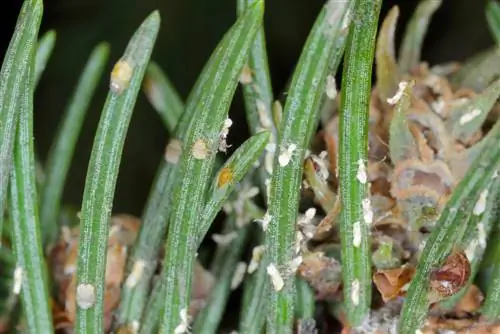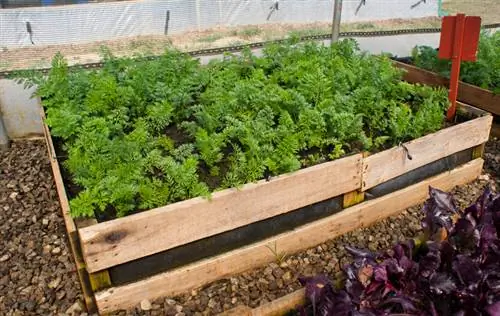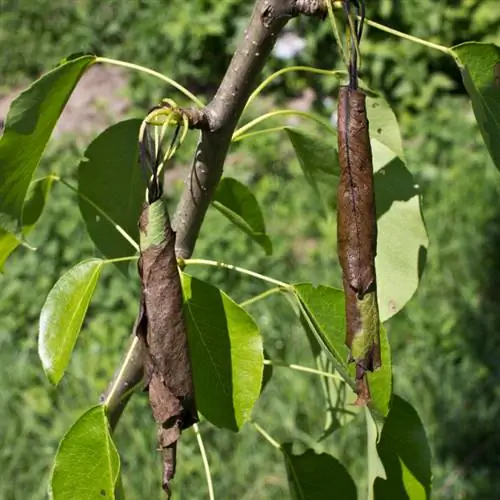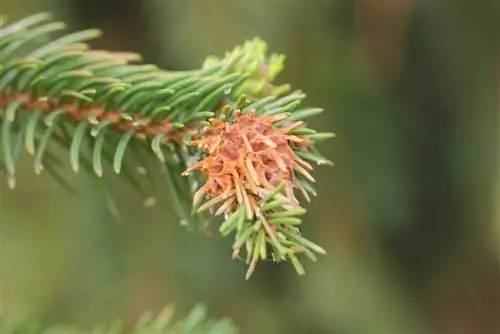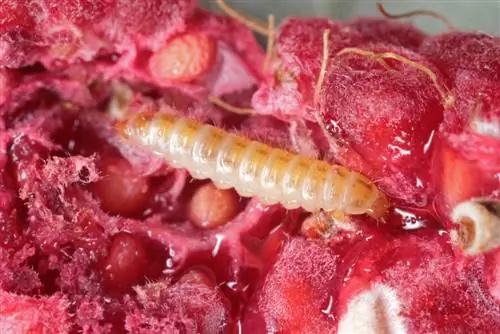- Author admin [email protected].
- Public 2023-12-16 16:46.
- Last modified 2025-01-23 11:22.
The sugarloaf spruce is a dwarf form of the original species Picea glauca. It has the variety name 'Conica' and is very popular in smaller gardens. Incorrect location conditions and suboptimal care can lead to pest infestation.
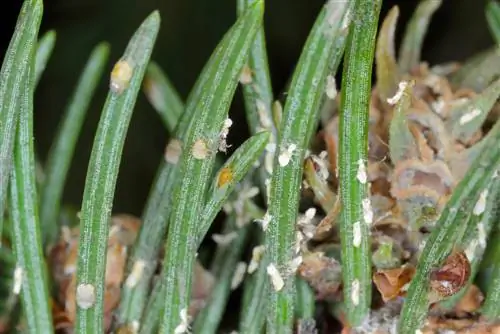
What pests occur on sugarloaf spruces and how do you combat them?
Sugarloaf spruces can be attacked by softwood spider mites and Sitka spruce aphids. To combat pests, the spruce should be regularly watered, fertilized and treated with rapeseed oil solutions. Beneficial insects such as parasitic wasps and lacewings can help with minor infestations, while natural remedies such as potassium soap can be used with severe infestations.
Coniferous spider mites
Oligonychus ununguis is a spider mite and is also known as the spruce spider mite. The insects can hardly be seen with the naked eye because they reach a maximum size of half a millimeter. Their spider threads, which extend between the needles, are more clearly visible.
Lifestyle
Dry and warm weather favors the spread of plant sap suckers. Mass reproduction occurs quickly in the protected crown area, as the harmful insects can produce up to ten generations per year. Winter eggs survive the cold season at the base of the needles. They are about 0.1 millimeters in size and have a green-brown to orange-red color. The first mites hatch from the end of April.
malicious image
The sugarloaf spruces appear burnt because the needles first take on a dirty gray-green to yellow-gray color on the sunny side and finally appear completely brown. They remain on the tree for some time before falling off. It is advisable to combat it as early as possible before the new leaves emerge.
This is what you can do:
- Water and fertilize coniferous plants well during dry periods
- Place potted plants in a cool, partially shaded location
- spray aqueous solution with rapeseed oil onto the affected shoots
Sikta spruce louse
Elatobium abietinum is also known as spruce tube louse and attacks coniferous trees from February or March. The sap suckers prefer the darker areas of the crown, so that an affected sugarloaf spruce first shows brown needles on the inside. As the pest spreads, these brownings spread to the top of the crown and into the outer crown area. An uncontrolled spread of pest insects can lead to the death of trees if they lose excessive amounts of foliage.
Detect infestation
Hold a white sheet of paper under the affected branches and pat them down with a broom handle. This way you can see whether the plant is infested with lice. Sitka spruce lice are green in color and have red eyes that are clearly visible under a magnifying glass.
Fighting pests
If the infestation is not yet widespread, beneficial insects can help. Parasitic wasps, lacewings and hoverflies are among the natural predators and control pest populations. If it is severe, natural remedies based on rapeseed oil or potassium soap can help, which you can spray onto all the branches.
Avoid pest infestations
In order to protect sugarloaf spruces from pests, the right choice of location is of great importance. The ornamental trees prefer the cooler areas of the garden, which provide moist conditions and are not prone to waterlogging. Dry, warm locations, lack of light and over-fertilization are risk factors that promote the spread of pests. Weakened trees are a prey for insect pests, so you should pay attention to optimal care.

